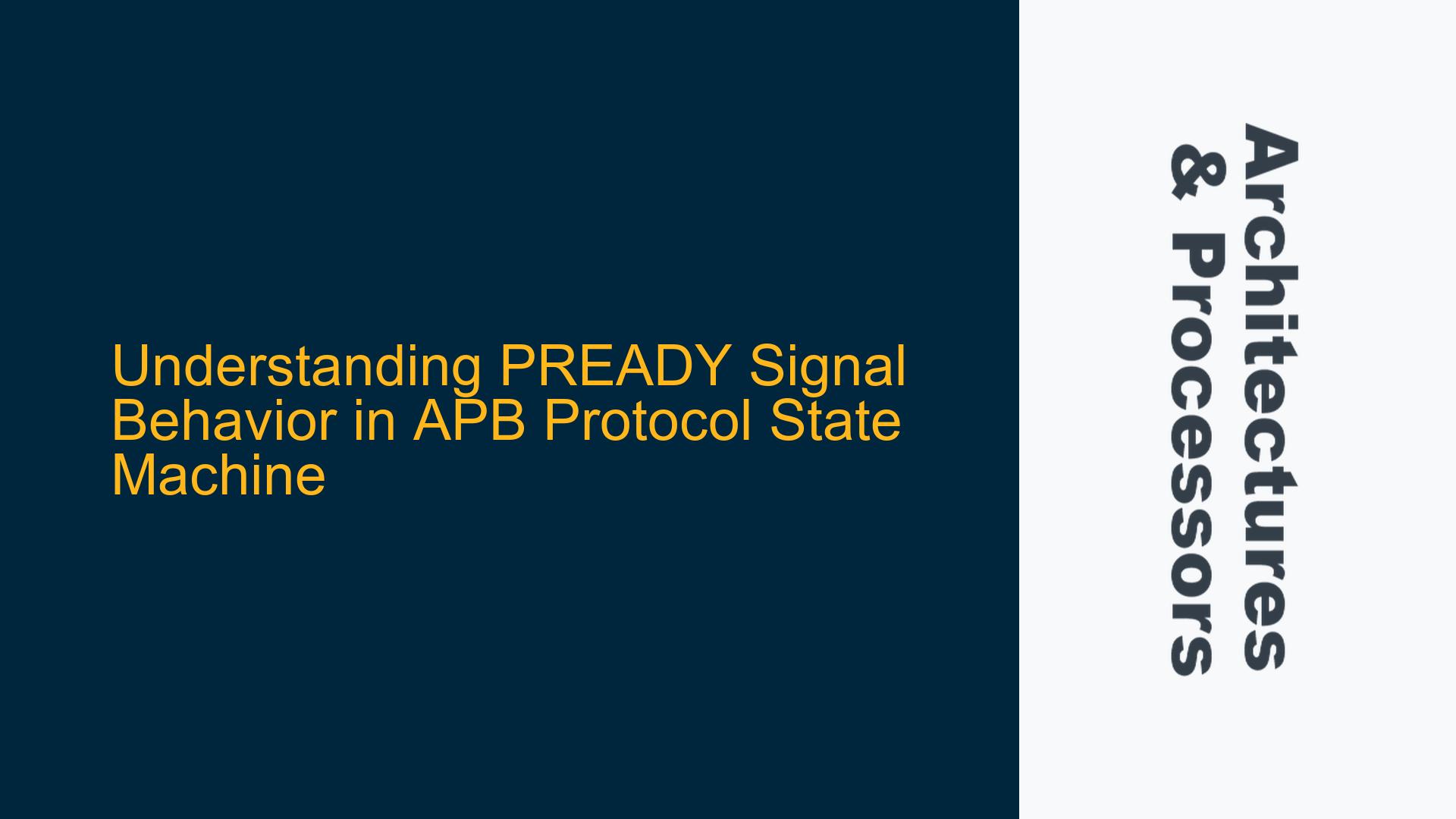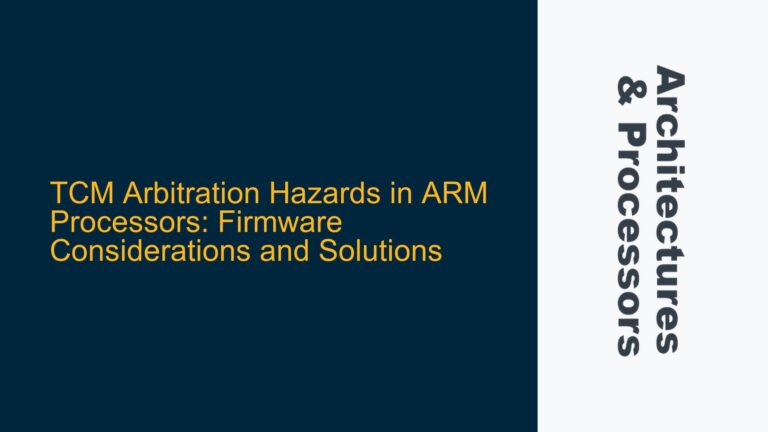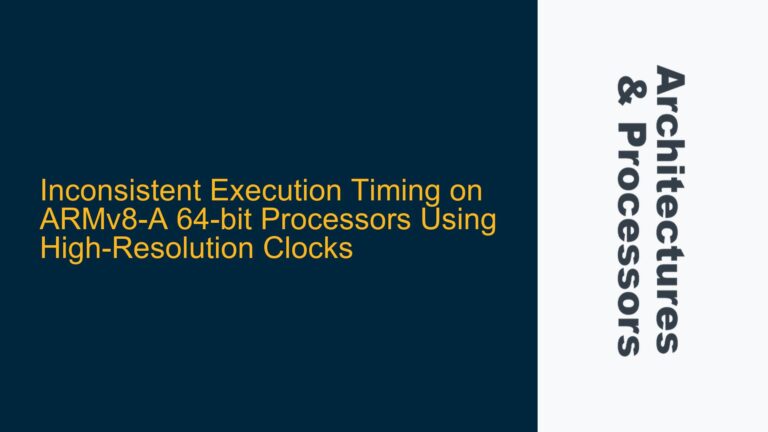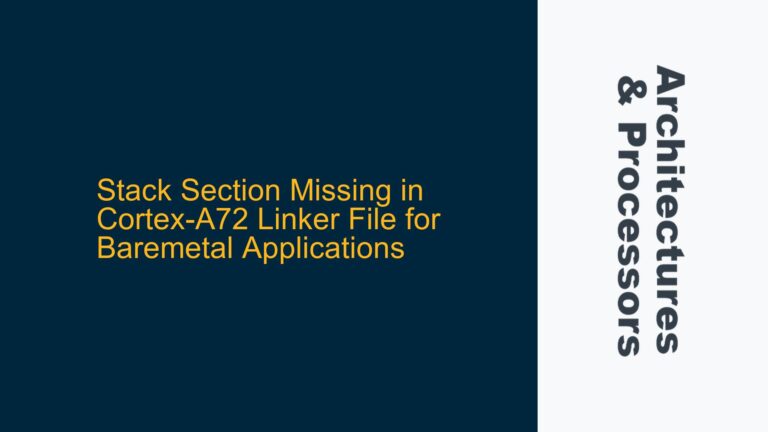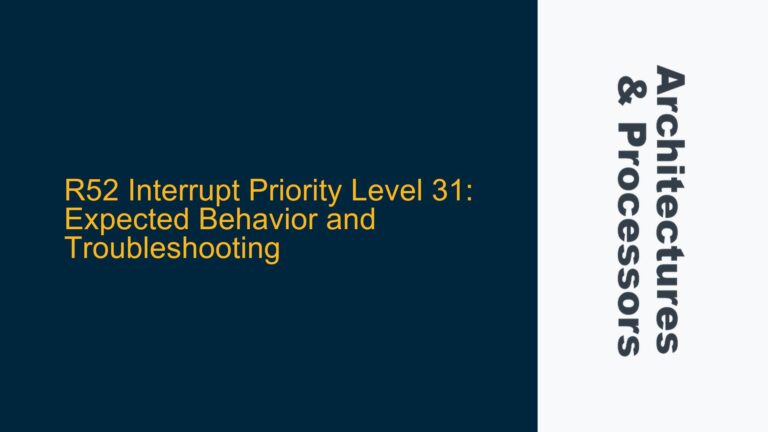APB State Machine and PREADY Signal Interaction
The Advanced Peripheral Bus (APB) is part of the ARM AMBA (Advanced Microcontroller Bus Architecture) family and is widely used for low-bandwidth, low-power peripheral communications. The APB protocol is simple and efficient, making it ideal for connecting peripherals such as UARTs, timers, and GPIOs to a more complex system bus like AHB or AXI. The APB protocol operates using a state machine that transitions between IDLE, SETUP, and ACCESS states. The PREADY signal plays a critical role in controlling the timing of these state transitions, particularly during the ACCESS state.
In the APB protocol, the PREADY signal is driven by the slave to indicate whether the current transfer can be completed. When PREADY is high, the transfer completes on the next rising edge of PCLK (APB clock). When PREADY is low, the transfer is extended, and the state machine remains in the ACCESS state until PREADY is asserted high. This mechanism allows peripherals with varying response times to interface seamlessly with the APB bus.
The confusion in the discussion arises from the interpretation of how PREADY is driven low and its impact on the state machine. Specifically, the question revolves around how the slave triggers PREADY low to exit the ACCESS state. However, this interpretation is slightly misaligned with the actual behavior of the APB protocol. PREADY being driven low does not cause an exit from the ACCESS state; rather, it extends the ACCESS state by adding wait states. The state machine only transitions out of the ACCESS state when PREADY is high, and the transfer completes.
Misinterpretation of PREADY Low as State Transition Trigger
The core misunderstanding lies in the assumption that driving PREADY low triggers an exit from the ACCESS state. In reality, PREADY being driven low is a mechanism for the slave to request additional time to complete the transfer. This is particularly useful for peripherals that may require multiple clock cycles to process a request, such as memory-mapped I/O devices or peripherals with internal buffering.
When the APB master initiates a transfer, it moves from the IDLE state to the SETUP state and then to the ACCESS state. In the ACCESS state, the slave drives PREADY to indicate its readiness. If the slave is not ready to complete the transfer, it drives PREADY low, effectively pausing the state machine in the ACCESS state. This allows the slave to take as many clock cycles as needed to prepare the data or complete the operation. Once the slave is ready, it drives PREADY high, and the state machine transitions to either the IDLE state (if no further transfers are pending) or the SETUP state (if another transfer is queued).
The confusion may stem from the dual role of PREADY in controlling both the transfer completion and the state machine progression. It is essential to recognize that PREADY low does not trigger a state transition but rather delays it. The state machine remains in the ACCESS state until PREADY is high, at which point the transfer completes, and the state machine proceeds accordingly.
Correcting PREADY Signal Behavior and State Machine Flow
To ensure proper operation of the APB protocol, it is crucial to correctly implement the PREADY signal behavior and its interaction with the state machine. The following steps outline the correct flow and provide guidance on troubleshooting common issues:
-
State Machine Design: Ensure that the APB state machine is designed to remain in the ACCESS state while PREADY is low. The state machine should only transition out of the ACCESS state when PREADY is high and the transfer completes. This can be verified by simulating the state machine and observing its behavior under different PREADY conditions.
-
Slave Implementation: The slave must correctly drive PREADY based on its internal state. If the slave requires additional time to complete a transfer, it should drive PREADY low until it is ready. Once the transfer can be completed, the slave should drive PREADY high. This behavior can be validated by simulating the slave’s response to various transfer requests and verifying that PREADY is asserted correctly.
-
Timing Analysis: Perform timing analysis to ensure that the PREADY signal meets the setup and hold requirements relative to the PCLK rising edge. If PREADY is not stable at the correct time, it can lead to incorrect state machine transitions or data corruption. Use static timing analysis tools to verify that the PREADY signal timing is within specification.
-
Debugging Tools: Utilize debugging tools such as waveform viewers and protocol analyzers to capture and analyze the behavior of the PREADY signal and the state machine. Look for instances where PREADY is driven low for extended periods or where the state machine transitions unexpectedly. These tools can help identify and resolve issues related to PREADY signal behavior.
-
Corner Case Verification: Test the design under various corner cases, such as back-to-back transfers, maximum wait states, and different clock frequencies. Ensure that the PREADY signal and state machine behave correctly under all conditions. This can be achieved by creating a comprehensive testbench that covers all possible scenarios.
By following these steps, designers can ensure that the PREADY signal is implemented correctly and that the APB state machine operates as intended. Proper understanding and implementation of the PREADY signal behavior are essential for reliable and efficient communication between the APB master and slave devices.
Summary of Key Points
- The PREADY signal is driven by the slave to indicate whether the current transfer can be completed.
- PREADY low extends the ACCESS state by adding wait states, while PREADY high allows the state machine to transition out of the ACCESS state.
- Misinterpretation of PREADY low as a state transition trigger can lead to incorrect implementation and behavior.
- Correct implementation involves ensuring that the state machine remains in the ACCESS state while PREADY is low and transitions only when PREADY is high.
- Verification and debugging tools are essential for validating the correct behavior of the PREADY signal and state machine.
By addressing these points, designers can avoid common pitfalls and ensure that their APB-based systems operate reliably and efficiently.
